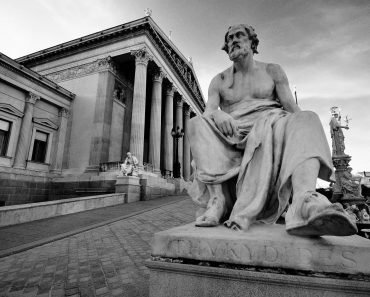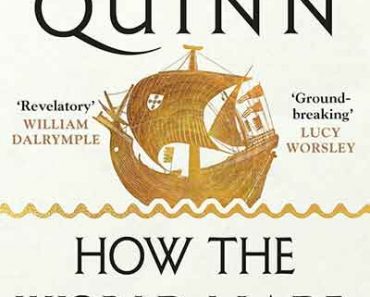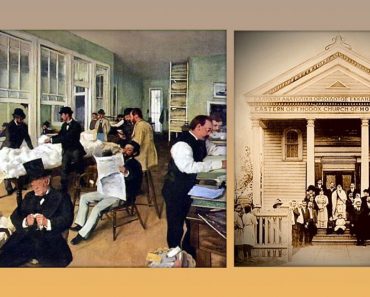By Ace Vincent
| Published
History textbooks are constantly being rewritten, and it’s not because historians are indecisive. Every few years, archaeologists uncover something that completely flips our understanding of the past on its head. These discoveries don’t just add new chapters to history—they often tear out entire sections and replace them with something far more fascinating.
From ancient civilizations that weren’t supposed to exist to technologies that emerged thousands of years earlier than anyone thought possible, archaeological finds have a habit of making scholars go back to the drawing board. Here is a list of 14 archaeological finds that disproved history books.
Göbekli Tepe

— Photo by halukcigsar
This Turkish site shattered everything we thought we knew about early human civilization. For decades, textbooks taught that agriculture came first, then permanent settlements, then organized religion and monumental architecture. Göbekli Tepe flipped that timeline completely upside down. Built around 9,500 BCE by hunter-gatherers, this massive temple complex predates Stonehenge by about 6,000 years and shows that humans were creating sophisticated religious monuments before they even figured out farming.
The Antikythera Mechanism

— Photo by Ale_Mi
When divers pulled this corroded bronze device from a Greek shipwreck in 1901, nobody could figure out what it was for decades. Once researchers finally decoded it, they discovered an ancient Greek computer from around 100 BCE that could predict eclipses and track planetary movements with stunning accuracy. History books had always portrayed ancient Greeks as brilliant philosophers and mathematicians, but nobody expected them to have mechanical computers that wouldn’t be matched again until the 14th century.
Troy

For centuries, scholars dismissed Homer’s Iliad as pure mythology, insisting that Troy was just a fictional city created by a storyteller. Then Heinrich Schliemann started digging in Turkey in the 1870s and found not just one Troy, but multiple cities built on top of each other across thousands of years. While we still debate which layer represents Homer’s Troy, the discovery proved that the epic poems were rooted in real places and possibly real events.
Pompeii’s Graffiti

— Photo by Charly7777
When Mount Vesuvius buried Pompeii in 79 CE, it preserved something historians never expected to find—ordinary people’s thoughts written on walls. The graffiti revealed that literacy was far more widespread in the Roman Empire than anyone had imagined. Shopkeepers, gladiators, and even children had left their marks on walls, showing that reading and writing weren’t just for the elite. This discovery forced a complete reassessment of Roman society and education.
The Rosetta Stone

Before 1799, Egyptian hieroglyphs were completely mysterious symbols that nobody could read. Scholars knew ancient Egypt was important, but they had no access to Egyptian voices or thoughts. The Rosetta Stone changed everything by providing the same text in hieroglyphs, ancient Greek, and another Egyptian script. Suddenly, Jean-François Champollion could crack the code, and an entire civilization began speaking to us across thousands of years.
Ötzi the Iceman

— Photo by sergio_pulp
When hikers found a frozen body in the Alps in 1991, they thought it was a recent mountaineering accident. Instead, they’d discovered Europe’s oldest natural mummy, a man who died around 3,300 BCE. Ötzi completely revolutionized our understanding of Copper Age life, showing that people from 5,000 years ago had sophisticated tools, clothing, and medical knowledge. He even had tattoos that appeared to be therapeutic, suggesting ancient acupuncture practices.
Machu Picchu

The Spanish conquistadors claimed they had found and conquered all the major Inca cities, and history books accepted this version of events for centuries. Then Hiram Bingham stumbled upon Machu Picchu in 1911, revealing that the Inca had hidden an entire magnificent city from European eyes. The discovery showed that Inca engineering and architecture were even more advanced than previously thought, and that the Spanish conquest was less complete than they’d claimed.
The Terracotta Army

— Photo by kstepien
Chinese historical records mentioned Emperor Qin Shi Huang’s elaborate tomb, but most scholars treated these descriptions as exaggerated legends. When farmers digging a well in 1974 uncovered thousands of life-sized clay soldiers, the world realized that Chinese historians hadn’t been exaggerating at all—if anything, they’d been understating the emperor’s megalomania. The Terracotta Army revealed the incredible scale and sophistication of ancient Chinese craftsmanship and military organization.
Sutton Hoo

Before this discovery in 1939, the Anglo-Saxon period in Britain was often called the ‘Dark Ages,’ portrayed as a time of cultural decline after the Romans left. The Sutton Hoo ship burial revealed incredibly sophisticated metalwork, jewelry, and artifacts that showed Anglo-Saxon culture was far more advanced and internationally connected than anyone had imagined. The burial goods included items from as far away as India and Constantinople, proving extensive trade networks existed during this supposedly ‘dark’ period.
Kennewick Man

When this 9,000-year-old skeleton was found in Washington State in 1996, its features didn’t match what anthropologists expected early Native Americans to look like. The discovery sparked intense debates about who the first Americans really were and when they arrived. While the controversy continues, Kennewick Man forced scientists to reconsider their theories about early human migration to the Americas and the diversity of ancient populations.

These ancient manuscripts, discovered starting in 1947, contained biblical texts that were over 1,000 years older than any previously known copies. The scrolls proved that Jewish and early Christian texts had been transmitted with remarkable accuracy over centuries, but they also revealed variations and alternative versions that weren’t in standard texts. The discovery revolutionized biblical scholarship and our understanding of religious development in the ancient world.
Cahokia

American history textbooks used to claim that North America had no major cities before European colonization, portraying Native Americans as small tribal groups. The archaeological investigation of Cahokia in Illinois revealed a massive urban center that housed up to 20,000 people around 1100 CE, making it larger than London at the time. The city had sophisticated urban planning, monumental architecture, and complex trade networks that stretched across the continent.
The Uluburun Shipwreck

This Bronze Age ship, discovered off the Turkish coast in 1982, contained cargo from across the known world—tin from Afghanistan, ivory from Africa, amber from the Baltic, and gold from Egypt. The wreck proved that international trade networks were far more extensive and sophisticated 3,400 years ago than historians had believed possible. It showed that the Bronze Age world was globally connected in ways that wouldn’t be seen again until much later periods.
Skara Brae

When a storm in 1850 uncovered this Neolithic village in Scotland, it revealed that Stone Age people were living in surprisingly comfortable and sophisticated homes around 3,200 BCE. The houses had stone furniture, drainage systems, and even primitive toilets—amenities that many Europeans wouldn’t enjoy until thousands of years later. Skara Brae forced archaeologists to rethink their assumptions about prehistoric life and social organization completely.
Digging Up the Truth

These discoveries remind us that history isn’t a fixed story but an ongoing investigation. Each time archaeologists pull something unexpected from the ground, they’re not just finding old objects—they’re recovering lost voices and forgotten achievements that change how we see ourselves and our past. The pattern is clear: ancient people were consistently more capable, more connected, and more sophisticated than we give them credit for. Tomorrow’s excavation might reveal another chapter we never knew existed, proving once again that the past is full of surprises waiting to be uncovered.
More from Go2Tutors!

Like Go2Tutors’s content? Follow us on MSN.







